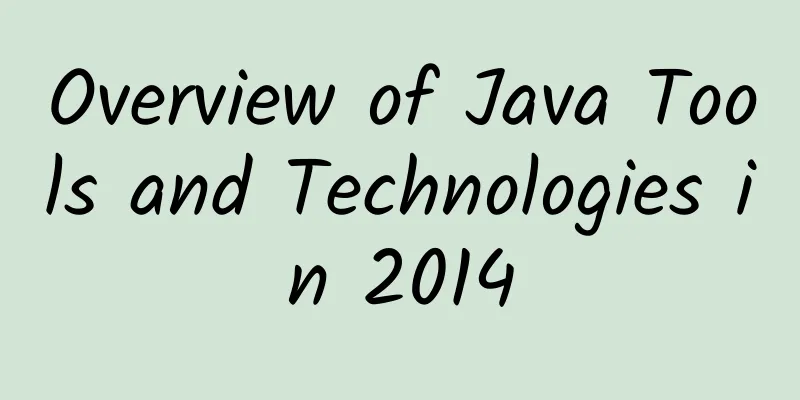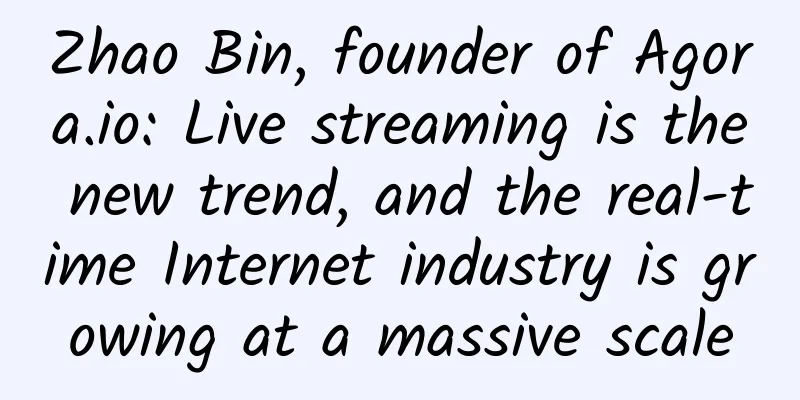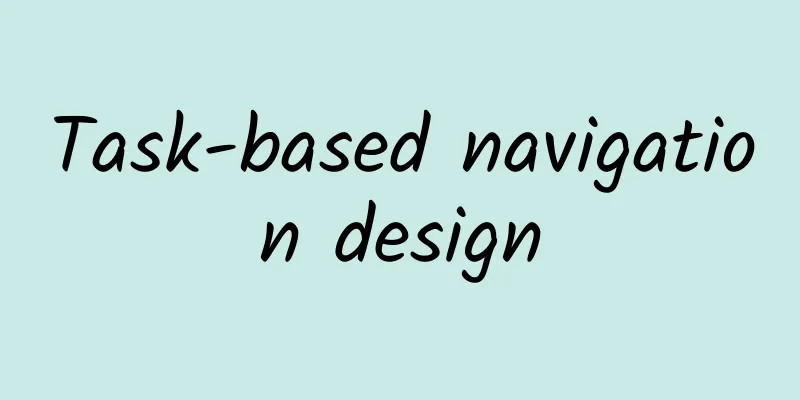Overview of Java Tools and Technologies in 2014

|
Introduction This article is ZeroTurnaround's annual survey on Java tools and technologies. Through questionnaires and data analysis, we can clearly understand the current use of tools and technologies in the Java community. Short Overview This survey is great. We've exceeded our previous response rate, and a donation goes to charity for every completed survey. We love doing it. Did you know this is the fifth year of ZeroTurnaround's Java Development Research Report? Pop some champagne! This series of surveys started in 2009 with a survey on the restart speed of Java application servers. With the deepening of the survey every year, it developed into an in-depth exploration of the industry layout in 2012 and published as the first research paper. In 2013, we faced two common problems that really affect efficient software architecture: software quality (are there bugs?) and delivery expectations (last week or next year?). We learned a lot from that survey! But now we thought it was time to look back at the Java tools and technologies landscape over that time, collect data and crunch numbers to see roughly what's happening in the market today. What better way to do that than to just throw at you a giant table of tools and technologies as of May 2014... snap! Note: When using this research data, you need to be responsible for your own judgment. The error sample calculated by DSS is 2.1%, but since we have self-selected samples, although we also provide research data that seems to be representative of the industry, it cannot be guaranteed to be completely random and may contain some errors that may not be detected. The report is 56 pages long and can really be considered a book. We recommend that you download it and take it with you. Download PDF Cut to the chase: What happened to Java during this period? Dear readers, this is a great opportunity for you to use any of the top technologies, so let’s go straight to the top tools and technologies in the above 14 categories. As you can imagine, in some categories, multiple tools are often used in combination, so we allow multiple selections (indicated by *). For those respondents who chose not to use a tool and reached a statistically significant portion (more than 5%), the responses have been normalized (indicated by º) to remove some non-user groups. This is not surprising. Java SE 7 (65%) is used by more than two-thirds of the 2,164 developers we surveyed, but even more are using JUnit (82.5%) , the most widely used single technology in the entire Java technology landscape. Another good thing: unit testing is key to ensuring your application is problem-free. Next up is Jenkins (70%) , our favorite housekeeper, which is used by three-quarters of developers using continuous integration tools (one in five don't use it). We've seen distributed VCSs grow rapidly in recent years, with Git (60%) used by two-thirds of developers, usually in conjunction with Subversion (57%) . Consider the next group of technologies that compete in the enterprise Java space - Hibernate (67.5%) , Maven and Nexus (64%) , Tomcat (50%) and Eclipse (48) which more or less give you a basic enterprise development stack. But don’t think you’ve drawn the line yet… because in this report, we asked people how they really feel about certain specific technologies. #p# Top Java Tools and Technologies of 2014
What technologies are developers really interested in? The other JVM language they are most interested in learning is (Scala – 47%) , the IDE they are willing to use is (IntelliJ IDEA Ultimate – 49%) and the build tool they are willing to learn is (Gradle – 58%) . Java 8 is the top choice for 35% of the participants’ companies in the next two years. Interestingly, the responses considering IDE — the most commonly used development tool — are no longer loyal to open source, but rather to the commercial version of IntelliJ IDEA. Overall, there are strong indications that these four technologies are already considered mandatory for development. How we conduct investigations If you don’t really care about the methodology, feel free to skip ahead and get to the beginning of the stats. But before we look at the numbers, let’s take a look at how we conducted our survey, who responded, and how we got them to share their information with us. Before we get started, let’s admit it, surveys aren’t really that exciting, right? At best, they’re quick to complete and don’t ask you anything overly personal. When we started, we were confident that this survey would get a better response than any of our previous ones. Why? Because we worked hard to make it better, and we focused on improving the user experience by:
The respondents said RebelLabs has grown a lot since our last major launch, including a number of hired investigators, and great geeks who clearly care about learning and sharing with others. In addition to asking RebelLabs subscribers, we asked Simon Maple — founder of Virtual JUG — to help us spread the word there and in the wider user community (including the London Java Community (LJC). After that, we asked friends and supporters on Twitter, Facebook, Google+, LinkedIn and DZone to spread the word, but this didn't work very well, and we think that not having the right incentives really had a lot to do with it. #p# Find the right incentives to get them involved Although many companies/organizations continue to do this, giving away iPads, Kindles, or remote-controlled helicopters is not the most effective way to attract geeks. First of all, software engineers are a relatively high-income group, and wealthy geeks usually buy these things when they need them, which is long before companies think it's cool to give these things away. Second, the privileged who don't need or want expensive gifts are reluctant to respond to these campaigns for personal reasons. After all, they're all nice people: why not do something that needs geeks to give? In this case, we promised that for every completed survey, we would donate $0.50 to Child's Play, a charity that donates games and entertainment systems to children in hospitals. After that, the number of people increased. Make it fun with the best survey software Another important part was trying to make the survey more fun! With the tools we used before, like Survey Monkey and Poll Daddy, we saw powerful features and complex logic, but it sacrificed simplicity of use. When looking for some alternatives, we quickly found Typeform, a survey tech startup in Spain, which showed us that we could make a good-looking survey and quickly customize it to use our own charts and color schemes. In 5 minutes of trying it out, we felt that we could better engage participants by making a good-looking profile form: the survey was smooth, looked good on mobile devices, and allowed you to use buttons to make selections, etc. Regardless, 2,164 software professionals completed the survey, resulting in over $1,082 in donations to charities we were happy to donate to. Next, let’s take a look at who they are and what tools and techniques they’re using. DOWNLOAD THE PDF #p# Sample Demographics
Before we decide what you're using, it's best -- or at least polite -- to find out a little about who you are and what you're doing. A total of 2,164 software professionals responded to our survey over a month. We tried to dig deeper to see if there were any important connections hidden behind the statistics — based on job content, application type, or mobile device operating system, for example, but the numbers didn’t reveal anything interesting. It's not surprising that development during this period is dominated by web applications (71%), as there are many visible trends showing this. But if you think about it, who is working on these libraries and frameworks (15%)? 1 in 7 developers are working on this. Very strange. Desktop applications (11%) continue to decline significantly, as the cloud continues to proliferate, which is easier to try and does not require additional downloads. Finally, there are some people working on mobile applications (3%). Presumably, most mobile application developers do not choose Java ME (SE embedded), but Dalvik (Android) or iOS. In terms of job roles/positions/titles, software developers (65%) make up almost two-thirds of the participants. More than a quarter of the participants are in more senior positions such as system architects (14%) or team leads/project managers (13%), and the rest are consultants (e.g., independent contractors), operations, QA, or other (some expert authority, "DevOps Architect", "Chief Code Officer" or other similar various). It was interesting to ask participants about their workstation and mobile phone operating systems - no big surprises: Microsoft Windows (50%) is used by more than half of participants, and while it will be interesting to predict what will happen to workstations in the next 5 years, at this point Linux/Unix (26%) and Apple OS X (24%) more or less split the rest. For mobile OS, Google Android (66%) controls two-thirds of the market, while the exclusive and more expensive Apple iOS (27%) is used by just over a quarter. The other mobile OSes (7%), namely Blackberry and Windows Mobile, make up the rest, but obviously we're not in science. ;-) Notice: When we asked about open source committers, we were surprised to find that 31% of developers said they were working on open source projects, which shows that we are more willing to work with these outstanding software developers than ordinary developers, although this is already a phenomenon that meets expectations! :) Original link: zeroturnaround Translation: ImportNew.com - Chen Xiaoshun Translation link: http://www.importnew.com/12106.html |
<<: Windows Phone's itch for domestic market share
>>: In-depth analysis of why Android apps are of low quality and crash
Recommend
Brand marketing and promotion techniques for the movie "Nezha"!
introduction A good brand story can establish bra...
Mobile game developers should pay attention to these 6 trends in 2016
We are already halfway through 2016, but that doe...
The national high-value tough guy Roewe RX8 will be equipped with a non-load-bearing body
Most of the SUVs on the streets nowadays are urba...
Discovery, location and solution of a BUG
Preface After the release of iOS 11, a series of ...
2018 Tik Tok complete analysis report!
I haven't written anything seriously for a lo...
Mayflies collectively "attack" the bridge, is it a sign of disaster or serious pollution?
Tuchong Creative Recently (September 2024), a gro...
My cat has pica, and even canned food doesn't taste good anymore!
Review expert: Zeng Shenming, professor of the De...
Has Shanghai been locked down due to the epidemic in 2022? Why can’t the city be locked down? Attached the latest news
Recently, many places in my country have reported ...
Brilliance Automotive Group has finally learned something from BMW. Can the Brilliance Automotive Group V7 create a miracle?
When talking about Zhonghua, what do you think of...
After reviewing the Douyin data for the past 4 months, these contents are the most effective in increasing followers!
The increase in users brought about explosive gro...
How to judge whether the air in your home is good or bad? Highly recommended to collect!
With the recent outbreak of various respiratory d...
A letter to Premier Li Keqiang: The road to entrepreneurship is being cut off
To Premier Li Keqiang: Let me introduce myself fi...
Cadillac CT6 debuts at Guangzhou Auto Show: Presidential-level car also has hybrid version
Although America and Europe are both the most mat...
Lying down or standing up? There are many ways to transport a rocket
Not long ago, a video of the Long March 7 rocket ...









